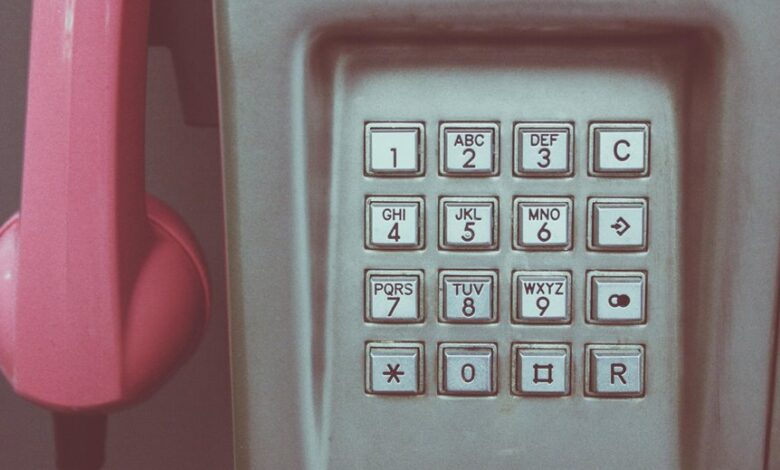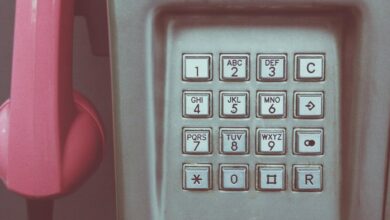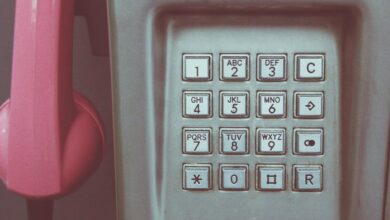Unknown Call Source Finder: 19216868.1, 262675594, 822933167, 893893334, 1884451955, 2042160910

The Unknown Call Source Finder serves as a crucial tool for identifying the origins of unfamiliar numbers, such as 19216868.1 and 262675594. Utilizing sophisticated algorithms, it cross-references these numbers with comprehensive databases to enhance caller identification accuracy. This system not only aids users in making informed decisions but also addresses the growing concerns surrounding personal security and potential scams. Understanding its functionality and implications raises essential questions about the evolving landscape of communication.
Understanding Unknown Call Sources
How can one accurately identify the origins of unknown calls? The challenge lies in balancing effective call blocking methods with increasing privacy concerns.
Various tools and technologies exist to trace the source, yet many users prioritize anonymity. Understanding these sources requires an analytical approach, evaluating caller identification systems and their limitations.
This ensures that individuals can reclaim their freedom from unsolicited communications without compromising their personal data.
How the Unknown Call Source Finder Works
The Unknown Call Source Finder operates through a systematic call source identification process, utilizing advanced algorithms to analyze incoming call data.
By employing sophisticated data analysis techniques, it cross-references caller information against extensive databases to ascertain the origin of unrecognized calls.
This methodical approach enhances the accuracy and reliability of identifying unknown call sources.
Call Source Identification Process
Frequently, the call source identification process employs a series of systematic steps to discern the origins of unknown calls. This protocol includes call source verification techniques while addressing privacy concerns. The following table illustrates key components involved in the process:
| Step | Description | Privacy Considerations |
|---|---|---|
| Data Collection | Gathering call metadata | Ensuring data anonymity |
| Source Analysis | Evaluating call origins | Balancing transparency |
| Verification Process | Confirming source validity | Minimizing personal data |
| Reporting Findings | Presenting results | Protecting user confidentiality |
Data Analysis Techniques Used
While analyzing unknown call sources, various data analysis techniques are employed to enhance accuracy and efficiency in identification.
Data mining processes extract valuable insights from extensive call records, while pattern recognition algorithms identify recurring features associated with known sources.
These methods facilitate a systematic approach to discern patterns, allowing users to uncover the origins of unknown calls, thereby ensuring greater transparency and control.
Benefits of Using a Call Source Finder
The implementation of a call source finder offers significant advantages, primarily the ability to identify previously unknown numbers.
This identification process not only facilitates communication but also enhances personal security by allowing users to screen calls effectively.
Consequently, users can make informed decisions about whether to engage with unknown callers, thereby reducing the risk of scams and unwanted interactions.
Identify Unknown Numbers
Utilizing a call source finder significantly enhances the ability to identify unknown numbers, as these tools systematically analyze caller information to provide clear insights.
By employing advanced unknown number identification techniques and caller verification methods, users gain access to detailed data about incoming calls.
This empowers individuals to make informed decisions regarding communication, ultimately fostering a sense of autonomy and control over their interactions.
Enhance Personal Security
Enhancing personal security becomes increasingly feasible with the implementation of a call source finder, as these tools provide critical information regarding unknown callers.
Identifying Common Types of Unknown Callers
Identifying unknown callers requires a systematic approach to categorize the various types that frequently disrupt personal and professional communication.
Common categories include telemarketing scams, which utilize automated systems, and spoofed numbers that obscure caller reputation.
Additionally, robocall identification aids in detecting phishing attempts, while ensuring users remain vigilant against privacy concerns related to both legitimate businesses and deceptive solicitations.
Tips for Dealing With Unknown Calls
How should one effectively manage the influx of unknown calls that can disrupt daily routines?
Implementing call-blocking features on devices is essential for blocking unknown numbers.
Users should also report spam to their service providers to enhance community protection.
The Importance of Caller Identification in Today’s World
As communication technology evolves, the significance of caller identification becomes increasingly critical in mitigating the risks associated with unsolicited and potentially harmful calls. Effective caller ID systems enhance caller privacy and protect individuals from telemarketing scams, fostering a secure communication environment.
| Benefits of Caller ID | Risks Without Caller ID |
|---|---|
| Enhanced privacy | Increased scam exposure |
| Reduced telemarketing | Unwanted interruptions |
| Informed decision-making | Potential fraud |
Conclusion
In an age where communication is fraught with uncertainty, the Unknown Call Source Finder emerges as a vital tool for ensuring personal security. By leveraging advanced algorithms to decode the origins of unknown numbers, users can navigate the murky waters of unsolicited calls with greater confidence. As the saying goes, “forewarned is forearmed,” underscoring the importance of caller identification. Ultimately, this technology not only enhances awareness but also fosters a safer communication environment in an increasingly complex landscape.




